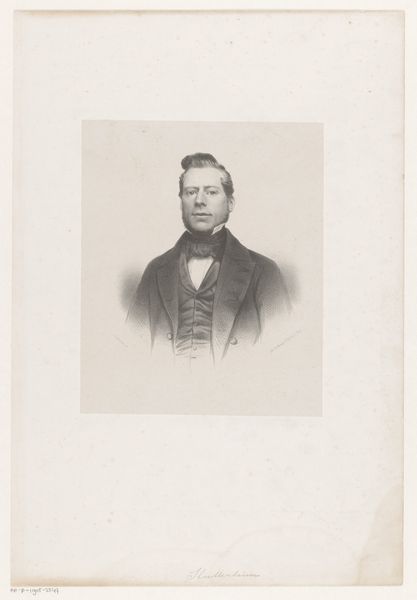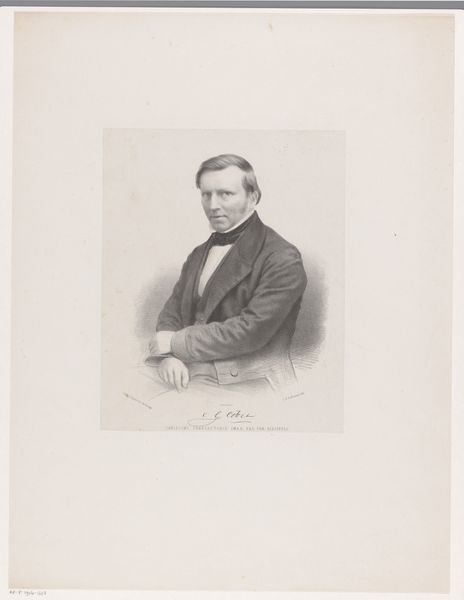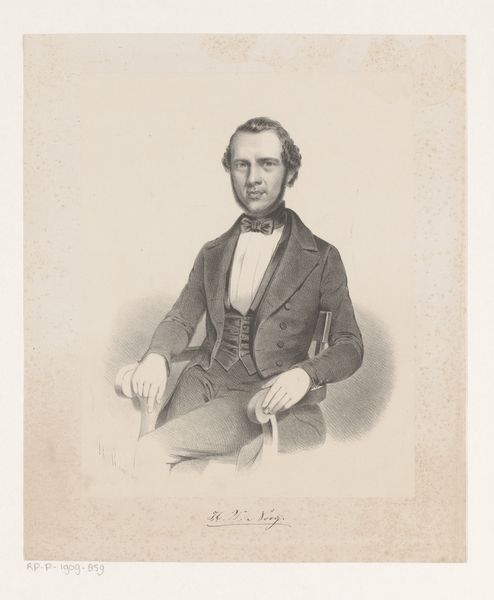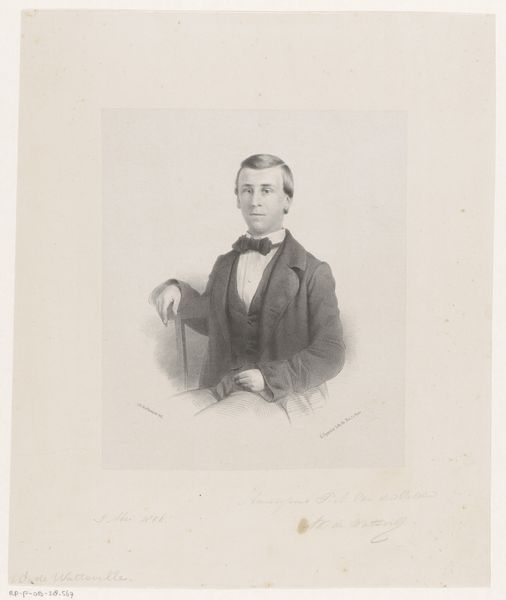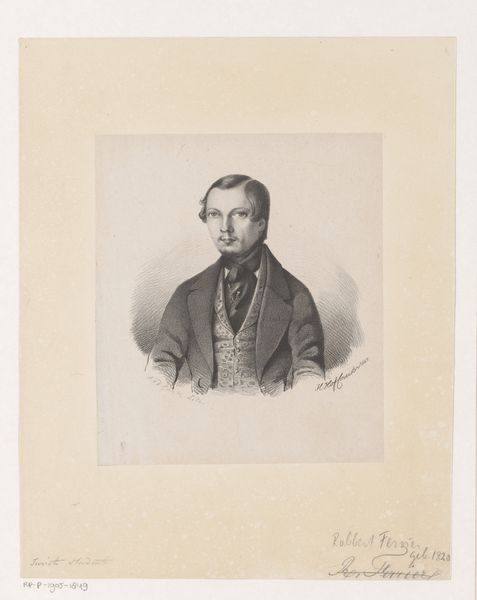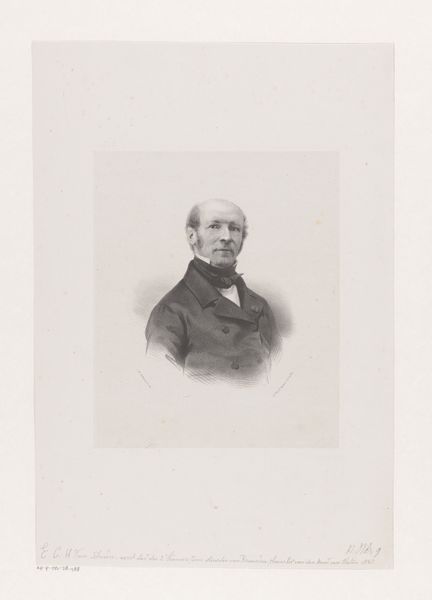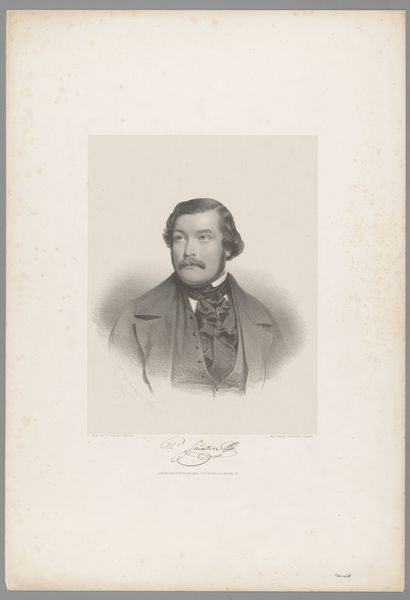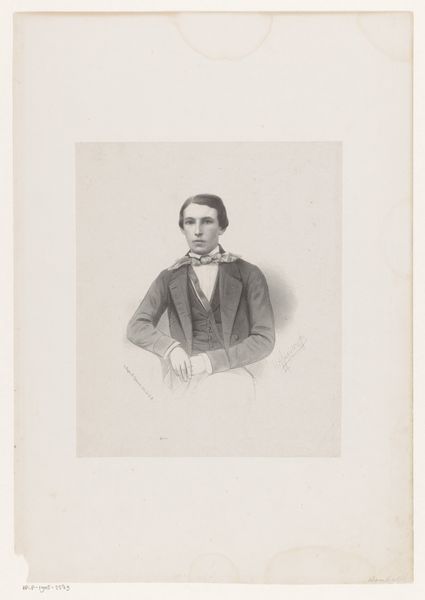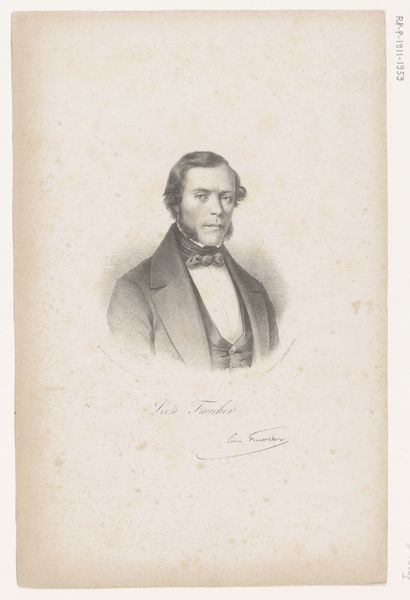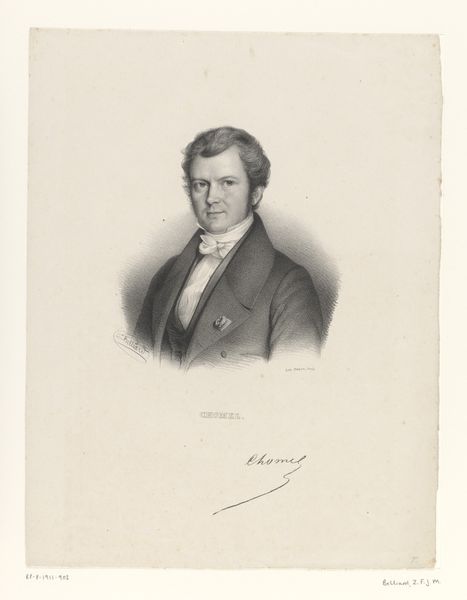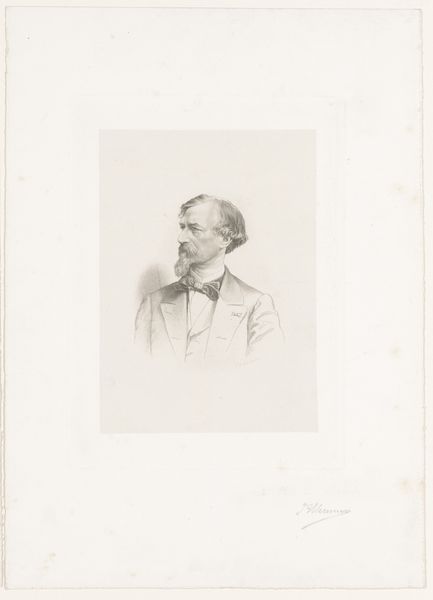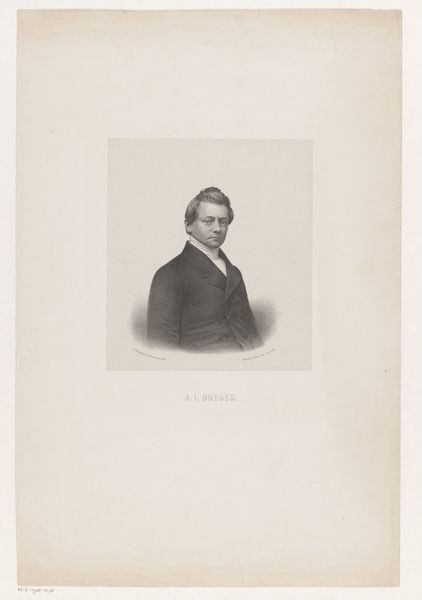
photography, gelatin-silver-print
#
portrait
#
photography
#
gelatin-silver-print
#
realism
Dimensions: height 455 mm, width 310 mm
Copyright: Rijks Museum: Open Domain
Editor: This is an interesting photograph, "Portret van een onbekende man" or "Portrait of an Unknown Man," made with a gelatin-silver print sometime between 1851 and 1883 by Johan Hendrik Hoffmeister. It's stark, simple, yet reveals detail... a compelling study in realism. What's your take, especially considering when it was made? Curator: Well, consider the context. Photography was relatively new. A portrait like this democratized representation. Who had access to portraits before photography? Mostly the wealthy elite. Now, the burgeoning middle class could commission images of themselves. Do you think this is reflected in the sitter's attire? Editor: Yes, he’s dressed formally but not extravagantly. A middle-class professional, perhaps? Curator: Precisely. Photography becomes a tool for social climbing, documenting respectability and aspiration. It allowed the rising bourgeoisie to participate in a visual culture previously reserved for the aristocracy. How do you think this affected the art world? Editor: I guess painters who focused on portraiture were threatened, but it opened other creative avenues. Curator: Exactly. Photography freed painting to explore abstraction and other subjects. This seemingly simple portrait is a visual record of a shift in social power and representation. Think about how it shaped perceptions of beauty, status and identity, made newly accessible to wider audiences. Editor: That makes perfect sense. It's a much more charged image than I initially perceived, now knowing how radical this kind of availability of portraiture was! Curator: Indeed. It’s a small window into a large cultural shift. I'll look at 19th-century photography in a different light from now on.
Comments
No comments
Be the first to comment and join the conversation on the ultimate creative platform.
